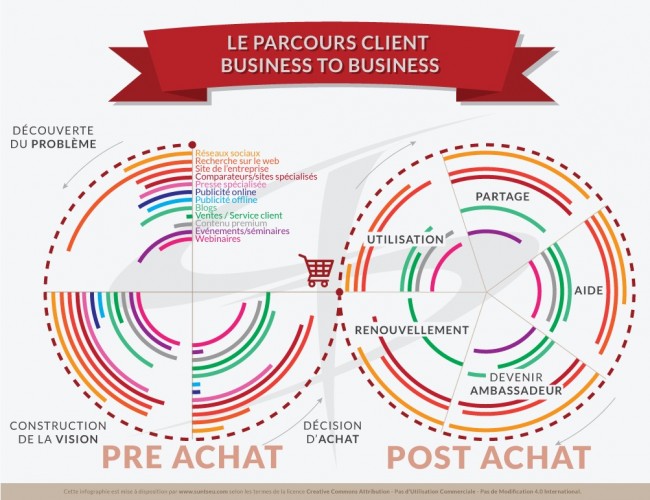That’s it! After many adventures, numerous surveys to determine your buyer personas (or “targets”) and a long analysis process, you now have a customer journey modeled and ready to use! Well on your way to more and more revenue, you have even started writing content.
The blog is active, the first white paper is being written, and … no one. Not a cat to read or download. How is this possible? After all this effort?
The solution: Align your content strategy with the customer journey
Here are a few keys to help you see things more clearly:
The key element: the content strategy
Creating content is good. But creating content just to have it, without any objective in mind, is unfortunately often useless. So the first thing to do when setting up your strategy is to determine your goal. Very often, this goal is simple: to sell.
Every article, white paper or ebook must somehow have an impact on your sales. By demonstrating your expertise through your various contents, you motivate leads to trust you, and, at a certain point, accept that you contact them (by giving you their email address to subscribe to your newsletter, for example).
So how do you do it? Well, that’s where the definition of your targets and buyer personas comes in: by knowing your audience, you are better able to know what will suit them. Are you talking to an engineering or technical audience? Remember to support your explanations and demonstrations with reliable figures. Are your customers in marketing? Explain to them how your offer will allow them to calculate their ROI! There are many possibilities, but it is essential to align your strategy with the customer journey.
Once the content and content strategy is defined, it must be aligned with the customer journey.
Align your strategy with the customer journey
Once you’ve found the topics that interest your audience, it’s now time to align the content with your customer journey. At the beginning of the cycle, for example, your lead won’t know exactly what he wants. To grab them and keep them interested, you don’t need to be too specific. On the contrary, starting by addressing the need with generalist content will have a better impact.
In the case of someone looking to calculate their marketing ROI, a first article directly comparing existing solutions on the market would be counterproductive. The first thing to do is perhaps to talk about marketing automation in a general way, the entry in detail will be done later with, why not, a white paper!
To succeed in capturing the lead at each stage of the customer journey, it is important to have defined a content matrix for each of your offers, from the most generic to the most specialized, while keeping in mind the importance of a call to action, such as downloadable content with high added value, in order to be able to get the sesame of any self-respecting marketer: the email address.

B2B customer journey
Last step: distribute your content.
That’s it, your content is written and available! Now you have to know how to put them forward. If the leads are not yet in your database, you can use your buyer personas to find out if they are more likely to discover them directly on the blog, via social networks (and if so, which ones), by guest blogging on a recognized platform…
If they already exist in your database, you can set up a nurturing system following the customer path, starting by sending generalist content and then more and more specialized, until you direct them to your offers at the right time.
Good luck, and good writing!






